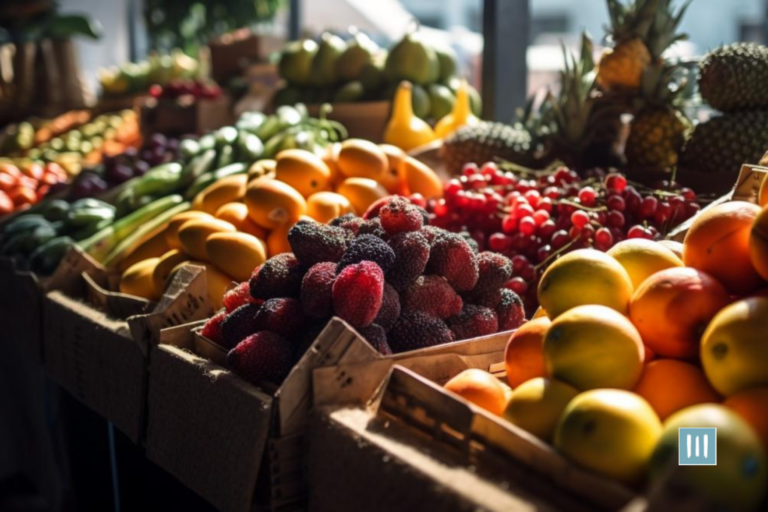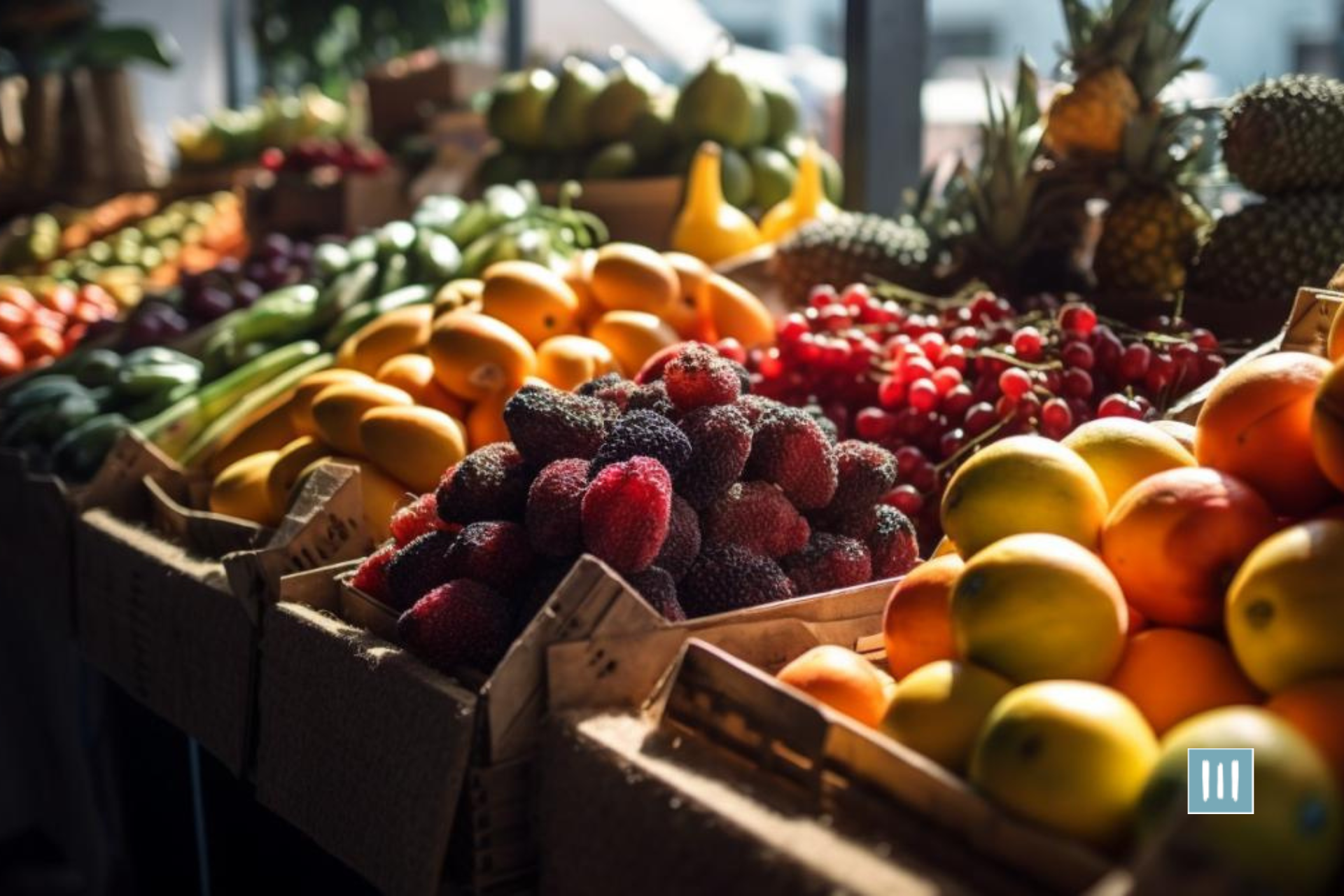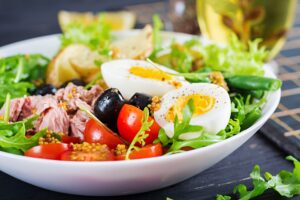Are you looking to improve your overall health and well-being? One of the best ways to achieve this is by adopting a whole-food diet.
By focusing on nutrient-rich foods and making smart choices at the grocery store, you can create a shopping list that promotes a healthy lifestyle.
In this article, we will guide you through the process of creating a whole foods shopping list, so you can make conscious choices that nourish your body and support your goals.
When it comes to your health, what you put into your body matters. A whole foods diet emphasizes the importance of consuming foods in their most natural form, without additives or processing.
By choosing whole foods, you are ensuring that you are providing your body with the essential nutrients it needs to thrive. From vibrant fruits and vegetables to whole grains and lean proteins, these foods are packed with vitamins, minerals, and antioxidants that support your overall well-being.
By incorporating these nutrient-rich foods into your shopping list, you are taking a step towards a healthier and more fulfilling lifestyle.
So, let’s dive in and discover how to create a whole foods shopping list that will nourish your body and elevate your health.
Understanding the Importance of a Whole Foods Diet
You may think that a whole foods diet is just a trendy way to spend your paycheck on overpriced vegetables, but let me assure you, there’s actually some science behind it that might make you reconsider your skepticism.
Whole foods refer to unprocessed or minimally processed foods that are as close to their natural state as possible. These include fruits, vegetables, whole grains, lean proteins, and healthy fats.
The reason why a whole foods diet is so important is because these foods are packed with essential nutrients that are beneficial for your overall health and well-being. By choosing whole foods over processed foods, you are ensuring that you are getting all the necessary vitamins, minerals, and antioxidants that your body needs to function properly.
Whole foods are rich in fiber, which helps promote healthy digestion and can prevent conditions like constipation and bloating. They are also lower in added sugars, sodium, and unhealthy fats, which can contribute to weight gain, high blood pressure, and heart disease.
Additionally, whole foods are often more filling and satisfying compared to processed foods. This means that you are less likely to overeat and can maintain a healthy weight. Whole foods also provide a steady source of energy throughout the day, helping you to stay focused and productive.
So, instead of dismissing a whole foods diet as just a fad, consider the science and benefits behind it. Incorporating more whole foods into your diet can lead to a healthier and more vibrant lifestyle.
Identifying Nutrient-Rich Foods
Identifying nutrient-rich foods can greatly enhance your overall well-being and provide essential nutrients for a balanced diet. When it comes to eating healthy, it’s important to choose foods that are packed with vitamins, minerals, and antioxidants. These nutrients not only help your body function at its best, but they also support your immune system, promote healthy digestion, and protect against chronic diseases.
One of the easiest ways to identify nutrient-rich foods is to focus on whole, unprocessed options. Fresh fruits and vegetables, whole grains, lean proteins, and healthy fats are all excellent choices.
Look for vibrant, colorful produce like berries, leafy greens, and bell peppers, as these are often packed with antioxidants. Whole grains like quinoa, brown rice, and oats provide fiber and essential nutrients. Lean proteins like chicken, fish, and tofu are great sources of protein without the added saturated fats found in processed meats. And don’t forget about healthy fats like avocados, nuts, and olive oil, which can help improve heart health and brain function.
By choosing nutrient-rich foods, you’re not only nourishing your own body but also setting an example for others. Your commitment to a healthy lifestyle can inspire those around you to make positive changes as well.
So next time you’re at the grocery store, take a moment to identify those nutrient-rich options and add them to your shopping cart. Your body will thank you for it!
Planning Your Weekly Meals
Start by mapping out your meals for the week to ensure that you stay on track with your health goals. Planning your meals ahead of time not only saves you time and stress during the week, but it also helps you make healthier choices.
When you have a plan in place, you’re less likely to reach for convenience foods or order takeout. To get started, think about the different meals you typically have each day – breakfast, lunch, dinner, and snacks. Consider what nutrients you need and how you can incorporate a variety of whole foods into each meal.
For example, for breakfast, you might plan to have oatmeal topped with fresh berries and a sprinkle of nuts for added protein. For lunch, you could pack a salad with plenty of colorful vegetables, grilled chicken, and a homemade vinaigrette. For dinner, you might plan to make a stir-fry with lots of veggies, tofu, and brown rice.
Don’t forget to plan for snacks too, such as carrot sticks with hummus or a piece of fruit with a handful of nuts. Once you have your meals mapped out, create a shopping list based on the ingredients you’ll need.
Make sure to include plenty of fruits, vegetables, whole grains, lean proteins, and healthy fats. By having a well-rounded shopping list, you’ll be able to stock your kitchen with nutritious foods that will support your healthy lifestyle.
Making Smart Choices in the Produce Aisle
When it comes to picking out produce, it’s important to make smart choices for a well-rounded diet. The produce aisle is filled with vibrant, fresh options that can provide you with essential vitamins and minerals.
Here are four smart choices to make when selecting your fruits and vegetables:
- Opt for a variety of colors: Different colors in fruits and vegetables indicate the presence of different nutrients. By choosing a variety of colors, you can ensure that you’re getting a diverse range of vitamins and minerals. So, don’t just stick to green leafy vegetables, but also incorporate red, orange, and purple produce into your cart.
- Choose organic when possible: Organic produce is grown without the use of synthetic pesticides, fertilizers, or genetically modified organisms. By choosing organic, you can reduce your exposure to harmful chemicals and support sustainable farming practices.
- Go for seasonal produce: Seasonal produce is not only fresher and tastier but also more affordable. When you buy fruits and vegetables that are in season, you can enjoy their peak flavor and nutritional value. Plus, buying seasonal produce supports local farmers and reduces the environmental impact of long-distance transportation.
- Don’t forget the frozen aisle: Frozen fruits and vegetables can be just as nutritious as fresh ones. They are picked at peak ripeness and immediately frozen, which helps to preserve their nutritional content. Plus, they are convenient and can be stored for longer periods, ensuring you always have healthy options on hand.
Incorporating Whole Grains and Lean Proteins
As you wander through the aisles of the grocery store, envision a symphony of nourishment, where the harmonious blend of whole grains and lean proteins creates a crescendo of vitality.
Whole grains are the virtuosos of the carbohydrate world, offering a plethora of nutrients and fiber. Look for whole-grain options such as brown rice, quinoa, and whole-wheat pasta. These complex carbohydrates provide a steady release of energy, keeping you fueled throughout the day.
Lean proteins, on the other hand, are the maestros of muscle-building and repair. Opt for skinless chicken breast, turkey, or fish like salmon and tuna. These lean sources of protein offer essential amino acids that are the building blocks of our cells. They also provide vital nutrients like omega-3 fatty acids, which support heart health and brain function.
By incorporating whole grains and lean proteins into your shopping list, you’re creating a symphony of nourishment that’ll support your healthy lifestyle. So, as you peruse the aisles, let your subconscious desire to serve others guide you to make smart choices that will benefit not only your own well-being but also the well-being of those around you.
Frequently Asked Questions
How can I ensure that I am getting all the necessary nutrients from a whole foods diet?
To ensure you’re getting all the necessary nutrients from a whole foods diet, focus on variety. Include a mix of fruits, vegetables, whole grains, lean proteins, and healthy fats. Don’t forget to stay hydrated and listen to your body’s hunger and fullness cues.
Are there any specific fruits and vegetables that are particularly beneficial for overall health?
To ensure overall health, incorporate fruits and vegetables like blueberries, kale, and spinach into your diet. Not only do they provide essential nutrients, but their vibrant colors add a touch of beauty to your plate.
What are some tips for meal prepping and planning my weekly meals to include whole foods?
To meal prep and plan your weekly meals with whole foods, start by setting aside time each week to prepare and portion your meals. Choose a variety of fruits, vegetables, lean proteins, and whole grains to ensure a balanced and nutritious diet. Consider batch cooking and using reusable containers for convenience and sustainability. Don’t forget to include healthy snacks and plenty of water to stay hydrated throughout the day. Don’t forget, by taking the time to plan and prepare your meals, you’re not only nourishing yourself but also serving your own well-being.
How can I make healthier choices when it comes to selecting produce at the grocery store?
To make healthier choices when selecting produce, trust your instincts. Engage all your senses, looking for vibrant colors, feeling for firmness, and smelling freshness. Suspense builds as you carefully select the best ingredients for your nourishing meals.
What are some good sources of whole grains and lean proteins that I can incorporate into my diet?
To incorporate whole grains, opt for brown rice, quinoa, and whole wheat bread. For lean proteins, choose skinless chicken breast, fish like salmon or tuna, and plant-based sources like tofu or lentils.

















